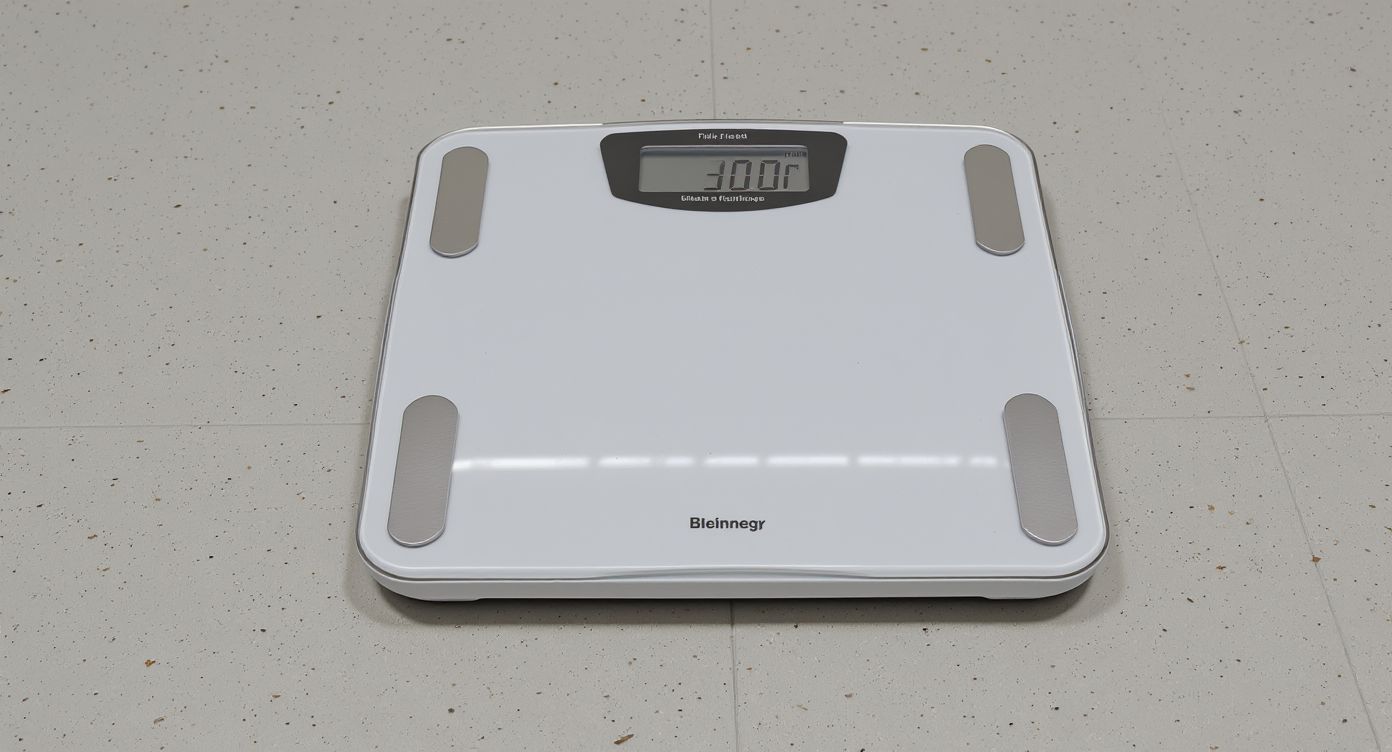- Vitazen Health
- Posts
- 🛡️The REAL reason you can't lose weight (hint: it's NOT calories)
🛡️The REAL reason you can't lose weight (hint: it's NOT calories)

Hello Everyone - Welcome to Vitazen Health!
In Today’s Edition:
Health Breakthrough: The REAL reason you can't lose weight (hint: it's NOT calories)
Quick Wins: Reverse Early Heart Failure in 30 Seconds a Day
Research + Resources: Universal Cancer Vaccine Closer to Reality
Recipe of the Week: Groundnut (Peanut) Soup with Chicken (4 Servings)


HEALTH BREAKTHROUGH
The REAL reason you can't lose weight (hint: it's NOT calories)
Hey there!
This week, let's talk about weight loss – a topic that frustrates so many of us. We've been told it's simple: calories in, calories out. But if that were true, why do so many struggle, even doing everything "right"?
The surprising truth is: the real reason you can't lose weight isn't just about calories. It's about deeper biological processes often overlooked. Understanding this unlocks a new path to health and results.
Let's dive in!
The Big Idea: It's Not Math, It's Biology
For too long, weight loss has been oversimplified. The idea that all calories are equal—100 calories of broccoli are like 100 calories of candy—ignores our complex biological systems. What you eat matters far more than just the number of calories, because different foods trigger distinct hormonal and metabolic responses.
Why does relying on calorie counting often fail?
Mistake #1: Believing all calories are equal. Your body processes whole foods (like avocado) vastly differently from processed snacks.
Mistake #2: Ignoring internal signals. Pure restriction can override natural hunger and fullness cues, leading to constant battles with cravings.
Mistake #3: Fighting your body's survival instincts. Sustained low calories can slow metabolism as a protective measure, making further weight loss incredibly difficult.
People fall into these traps because the narrative simplifies a complex biological process. This leaves them stuck in cycles of frustration, self-blame, and often, weight regain.
So, let's shift your perspective and work with your body:
Step 1: Tame the Insulin Rollercoaster
The first step to sustainable weight loss is understanding insulin. This hormone helps your body use glucose (sugar) for energy. Eating carbohydrates, especially refined ones, spikes your blood sugar, causing your pancreas to release a surge of insulin to bring it down.
Why this matters for weight: Research, including insights from the National Institutes of Health (NIH), shows that consistently high insulin levels make your body efficient at storing fat and inefficient at burning it—it's always in "storage mode." Over time, cells can become "insulin resistant," forcing your pancreas to pump out even more insulin. This cycle makes weight loss incredibly hard, as explained by resources like the Mayo Clinic.
The myth here is that all carbs are bad. It's about choosing the right carbs—whole, unprocessed, fiber-rich ones that don't cause dramatic blood sugar spikes.
What to do instead: Focus on foods that stabilize blood sugar and insulin: lean proteins, healthy fats (avocados, nuts, olive oil), and plenty of non-starchy vegetables. When you do eat carbs, choose whole grains, fruits, and legumes. For example, swapping sugary cereal for eggs and avocado dramatically changes your body's hormonal response, setting you up for fat burning.
Takeaway: By managing insulin, you signal your body it’s safe to release stored fat for energy.
Step 2: Rebalance Your Hunger Hormones
Beyond insulin, hormones like leptin and ghrelin play a crucial role. Ghrelin is the "hunger hormone"; leptin signals fullness.
Research from institutions like Brown University Health highlights how imbalances in these hormones sabotage weight loss. Constant calorie restriction can raise ghrelin (perpetual hunger) and drop leptin (difficulty feeling satisfied). Chronic stress also elevates cortisol, increasing appetite and promoting belly fat storage.
The mistake here is thinking hunger is purely willpower. It's a powerful biological drive influenced by these complex hormonal signals.
What to do instead: Prioritize sleep, manage stress, and eat truly satisfying meals. Quality sleep regulates ghrelin and leptin. Stress-reduction techniques like mindfulness help control cortisol. Most importantly, eat meals rich in protein, healthy fats, and fiber. These nutrients are incredibly satiating, sending strong "I'm full" signals, making it easier to naturally eat less without deprivation.
Takeaway: Nurturing hormonal balance empowers your body to naturally regulate hunger and fullness, making weight management feel less like a fight.
Step 3: Cultivate a Healthy Gut Microbiome
Surprisingly, the trillions of microorganisms in your gut—your gut microbiome—significantly impact your weight and metabolism. Research from organizations like ZOE suggests the balance of "good" and "bad" bacteria influences calorie extraction, fat storage, and even insulin sensitivity.
An imbalanced gut (dysbiosis) can lead to inflammation, affect metabolism, and contribute to cravings. Some gut bacteria are more efficient at extracting calories, meaning you might absorb more energy from the same meal.
The myth here is overlooking the gut entirely in weight management. Digestion is a dynamic ecosystem.
What to do instead: Feed your gut a diverse range of plant-based foods: fruits, vegetables, whole grains, legumes, nuts, and seeds. These are rich in fiber (prebiotics), food for beneficial gut bacteria. Incorporate fermented foods like yogurt, kefir, sauerkraut, and kimchi (probiotics). Adding daily fermented vegetables can introduce helpful microbes, potentially improving metabolism and reducing inflammation.
Takeaway: A thriving gut microbiome supports a healthier metabolism, reduces inflammation, and helps you feel satisfied.
That's it!
The "calorie counting" approach often misses the bigger picture. By focusing on insulin sensitivity, hormonal balance, and gut health, you're addressing the fundamental biological reasons your body might be holding onto weight. While we're not making medical recommendations, the research is clear: understanding and optimizing your internal biology is one of your most powerful tools for sustainable weight loss and vibrant health.


QUICK WINS
Reverse Early Heart Failure in 30 Seconds a Day
Dr. Michael Greger, author of How Not to Die, believes that many cases of early-stage heart failure are not only preventable—but potentially reversible—with diet.
His approach? Target the root causes: chronic inflammation, high blood pressure, and clogged arteries. And it starts with what’s on your plate.
Here’s one of his simplest, most powerful daily tips:
Eat at least one serving of legumes—beans, lentils, or peas—every single day.
Why This Works
A major meta-analysis published in Advances in Nutrition found that just one daily serving of legumes was associated with a 10% lower risk of cardiovascular disease.
Here’s why legumes are heart-healing all-stars:
💪 Fiber – Sweeps out excess cholesterol
🟤 Potassium – Lowers blood pressure naturally
🌱 Phytochemicals – Reduce inflammation and oxidative stress
The Simple Rule
Once a day, ask:
“Where are my beans?”
Try adding:
🥣 Lentil soup for lunch
🌯 Black beans in a burrito
🥗 Hummus on whole grain crackers
🍛 Chickpeas in curry
Bonus: Canned or frozen beans count—just rinse and serve.
This daily habit is a no-brainer: it’s budget-friendly, backed by science, and may help take pressure off your heart—literally.


RESEARCH ROUNDUP + RESOURCES
📉 US Children's Health Declining Across Multiple Indicators: According to a study published in JAMA and highlighted by the American College of Cardiology , the health of children in the U.S. has worsened over the past 17 years. This includes increased rates of child mortality, chronic conditions, and obesity, which now affects 20% of children, alongside a rise in mental health issues like depressive symptoms and loneliness. This is a big deal because it signals a multi-faceted crisis, indicating a need to address "underlying systemic factors" and "developmental ecosystems" to prevent the "U.S. health disadvantage" from worsening.
💉 Universal Cancer Vaccine Closer to Reality: According to Medical Xpress , a surprising new finding could pave the way for a universal cancer vaccine. An experimental mRNA vaccine has demonstrated the ability to significantly boost the tumor-fighting effects of immunotherapy in a mouse-model study. This is a big deal because this development brings researchers closer to their goal of creating a universal vaccine that can "wake up" the immune system to effectively fight various cancers.
🦠 Drug-Resistant Fungal Infections on the Rise: According to a study published in The Lancet Microbe and reported by the AMA , infections caused by Aspergillus fumigatus are becoming harder to treat due to increasing resistance to available drugs. This fungus is recognized by the World Health Organization (WHO) as one of its top priority fungi. This is a big deal because it highlights a growing global threat from antimicrobial resistance, extending beyond bacteria to fungi, making common infections more dangerous and challenging to manage with current treatments.

RECIPE OF THE WEEK
Groundnut (Peanut) Soup with Chicken (4 Servings)
This hearty Ghanaian groundnut soup is a delicious and nutrient-dense meal, packed with lean protein from chicken and rich, healthy fats from peanuts. It's an excellent source of vitamins and minerals, promoting longevity and aiding in chronic illness prevention. Its comforting flavors are a staple in West African cuisine, offering a balanced and satisfying dish.
Estimated calories: 550-650 per serving.

Ingredients
For the Chicken Base:
1 lb boneless, skinless chicken thighs, cut into 1-inch pieces
1 teaspoon salt
½ teaspoon black pepper
1 tablespoon vegetable oil
1 large onion, chopped
2 cloves garlic, minced
1-inch ginger, grated
1 red bell pepper, deseeded and chopped
1-2 Scotch bonnet peppers, destemmed and left whole (or finely minced for more heat)
1 (14.5 oz) can diced tomatoes, undrained
For the Peanut Butter Sauce:
1 cup unsweetened creamy peanut butter
4 cups chicken broth, low sodium
1 (10 oz) bag fresh spinach, washed and roughly chopped
Recipe Steps
Season and Brown Chicken: Pat the chicken pieces dry and season with salt and black pepper. Heat vegetable oil in a large pot or Dutch oven over medium-high heat. Add the seasoned chicken and cook until lightly browned on all sides, about 5-7 minutes. Remove chicken and set aside.
Sauté Aromatics: Reduce heat to medium. Add the chopped onion to the same pot and sauté until softened and translucent, about 5 minutes. Stir in the minced garlic and grated ginger, cooking for another minute until fragrant.
Add Peppers and Tomatoes: Add the chopped red bell pepper and whole (or minced) Scotch bonnet peppers to the pot. Cook for 3-4 minutes until the bell pepper begins to soften. Pour in the can of diced tomatoes with their liquid, stirring to combine.
Prepare Peanut Mixture: In a separate bowl, whisk together the unsweetened creamy peanut butter with 1 cup of the chicken broth until smooth and lump-free. This creates a thick paste.
Combine and Simmer: Gradually whisk the peanut butter paste into the tomato mixture in the pot, ensuring no lumps remain. Slowly pour in the remaining 3 cups of chicken broth, stirring constantly until well combined and the soup begins to thicken.
Return Chicken and Simmer: Return the browned chicken pieces to the pot. Bring the soup to a gentle simmer, then reduce heat to low, cover, and let it braise for at least 30-40 minutes, or until the chicken is tender and the flavors have melded. Stir occasionally to prevent sticking.
Add Spinach: Just before serving, stir in the fresh spinach until it wilts, which should only take 2-3 minutes.
Adjust Seasoning: Taste the soup and adjust salt and pepper if needed. Remove the whole Scotch bonnet peppers before serving if you prefer less heat.
Serving Suggestions
Serve this Groundnut Soup hot with a side of brown rice for a complete whole grain meal, or with boiled yam or cassava for an authentic experience. A simple side salad of mixed greens with a light vinaigrette would also complement the richness of the soup and add extra vegetables.

PS - Want to stop feeding inflammation and start healing your body with every sip?
In The Anti-Inflammation & Immunity Smoothie & Juice Recipe Book, not only do we give you 65+ science-backed smoothie and juice recipes designed to reduce inflammation and bulletproof your immune system, but we also include The Ultimate Anti-Inflammatory Ingredient Guide (so you never guess which foods fight disease), complete recipe categories for gut-healing, immune-boosting, and anti-aging formulas, AND the exact Green Detox Powerhouse blends that flush toxins and rebuild your liver.
You'll never wonder what to drink to heal your body again.

Reply